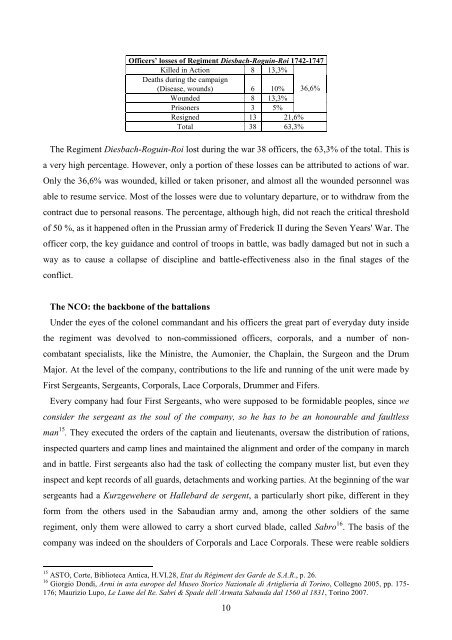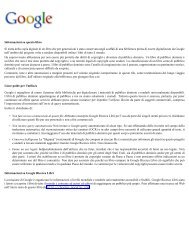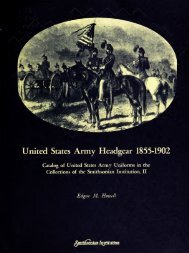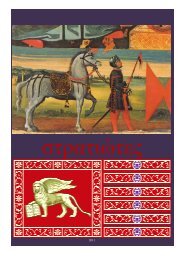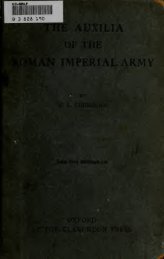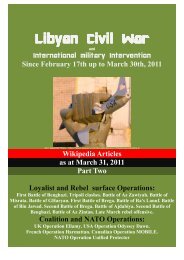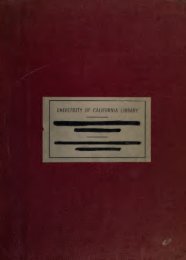Cerino-Badone, Swiss Regiments - Libreria Militare Ares
Cerino-Badone, Swiss Regiments - Libreria Militare Ares
Cerino-Badone, Swiss Regiments - Libreria Militare Ares
- No tags were found...
Create successful ePaper yourself
Turn your PDF publications into a flip-book with our unique Google optimized e-Paper software.
The Regiment Diesbach-Roguin-Roi lost during the war 38 officers, the 63,3% of the total. This is<br />
a very high percentage. However, only a portion of these losses can be attributed to actions of war.<br />
Only the 36,6% was wounded, killed or taken prisoner, and almost all the wounded personnel was<br />
able to resume service. Most of the losses were due to voluntary departure, or to withdraw from the<br />
contract due to personal reasons. The percentage, although high, did not reach the critical threshold<br />
of 50 %, as it happened often in the Prussian army of Frederick II during the Seven Years' War. The<br />
officer corp, the key guidance and control of troops in battle, was badly damaged but not in such a<br />
way as to cause a collapse of discipline and battle-effectiveness also in the final stages of the<br />
conflict.<br />
Officers’ losses of Regiment Diesbach-Roguin-Roi 1742-1747<br />
Killed in Action 8 13,3%<br />
Deaths during the campaign<br />
(Disease, wounds) 6 10% 36,6%<br />
Wounded 8 13,3%<br />
Prisoners 3 5%<br />
Resigned 13 21,6%<br />
Total 38 63,3%<br />
The NCO: the backbone of the battalions<br />
Under the eyes of the colonel commandant and his officers the great part of everyday duty inside<br />
the regiment was devolved to non-commissioned officers, corporals, and a number of noncombatant<br />
specialists, like the Ministre, the Aumonier, the Chaplain, the Surgeon and the Drum<br />
Major. At the level of the company, contributions to the life and running of the unit were made by<br />
First Sergeants, Sergeants, Corporals, Lace Corporals, Drummer and Fifers.<br />
Every company had four First Sergeants, who were supposed to be formidable peoples, since we<br />
consider the sergeant as the soul of the company, so he has to be an honourable and faultless<br />
man 15 . They executed the orders of the captain and lieutenants, oversaw the distribution of rations,<br />
inspected quarters and camp lines and maintained the alignment and order of the company in march<br />
and in battle. First sergeants also had the task of collecting the company muster list, but even they<br />
inspect and kept records of all guards, detachments and working parties. At the beginning of the war<br />
sergeants had a Kurzgewehere or Hallebard de sergent, a particularly short pike, different in they<br />
form from the others used in the Sabaudian army and, among the other soldiers of the same<br />
regiment, only them were allowed to carry a short curved blade, called Sabro 16 . The basis of the<br />
company was indeed on the shoulders of Corporals and Lace Corporals. These were reable soldiers<br />
15 ASTO, Corte, Biblioteca Antica, H.VI.28, Etat du Régiment des Garde de S.A.R., p. 26.<br />
16 Giorgio Dondi, Armi in asta europee del Museo Storico Nazionale di Artiglieria di Torino, Collegno 2005, pp. 175-<br />
176; Maurizio Lupo, Le Lame del Re. Sabri & Spade dell’Armata Sabauda dal 1560 al 1831, Torino 2007.<br />
10


